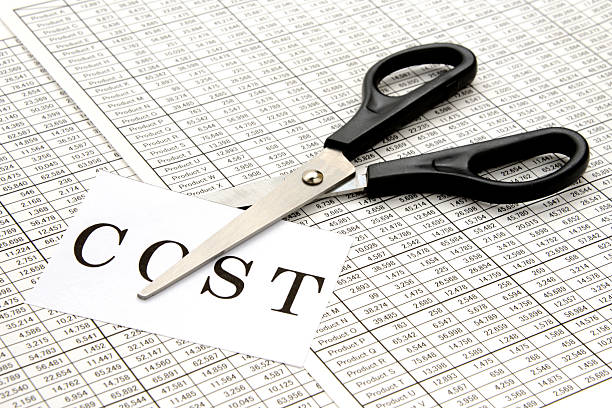Table of Contents
Inventory Carrying Cost--What It Is & How To Caculate It
Time: May 15,2023 Author: SFC Source: www.sendfromchina.com
Inventory carrying costs are a crucial factor for e-commerce sellers to consider when managing their overall expenses. However, some may still be unclear on what it entails, how to compute it, what formulas to use, and how to lower it. This blog post will cover the top 5 things you need to know about inventory carrying costs.1.What Is Inventory Carrying Cost
.jpg)
Inventory carrying cost, also known as holding cost, is the total cost of holding inventory over a certain period of time. It includes all expenses related to storing unsold products, such as warehousing, labor, insurance, and taxes, as well as other indirect costs like opportunity cost and depreciation. By calculating the inventory carrying cost, businesses can determine how much they are spending on inventory management and make informed decisions about optimizing their inventory levels to reduce these costs.
2.The Components of Inventory Carry Cost

Capital Cost: Capital costs encompass the financial investments, including the principal amount and interest, made in a business's inventory. It refers to the funds allocated to acquire fixed assets and the interest incurred on those purchases.
The capital costs constitute a significant portion of the overall inventory value and are typically expressed as a percentage. For instance, if a company has a capital cost of 25% and its total inventory value amounts to $100,000, the capital cost would be $25,000. This indicates that $25,000 of the inventory's value is attributed to the capital costs incurred by the business.
Storage Space Cost: Storage space costs means all the expenses related to organizing and maintaining your inventory in a designated storage area. This category includes the cost of outsoucing the inventory or goods to a 3PL order fulfillment servicer, as well as any expenditures for facilities such as air conditioning or heating systems to ensure optimal storage conditions. Moreover, variable storage costs account for utilities and other related expenses necessary for the storage space.
Inventory Service Cost: Inventory service costs encompass the expenses associated with various services that aid a company in efficiently managing its inventory. This may include utilizing a subscription-based inventory management system to effectively track and monitor stock levels.
Additionally, businesses incur service costs to comply with governmental regulations, such as calculating and settling tax rates and acquiring appropriate insurance coverage. By investing in these inventory service costs, companies can streamline their inventory management processes and ensure compliance with relevant regulations.
Costs of Inventory Risks: When carrying business inventory, there are inherent uncertainties and risks that need to be accounted for. The costs associated with inventory risks address these uncertainties, which include the following factors:
1. Shrinkage: This refers to inventory losses that occur before the sale of an item to a customer. It can be caused by theft, damage, or errors in inventory management.
2. Depreciation: Over time, certain types of inventory may lose value or become less desirable due to factors such as wear and tear, changes in market demand, or technological advancements. Depreciation accounts for the decrease in value of inventory items.
3. Obsolescence: This occurs when inventory becomes outdated or irrelevant, typically due to product expiration, changes in customer preferences, or advancements in technology. Obsolescence costs cover the loss incurred when inventory becomes unsellable or less valuable.
3.Inventory Carrying Cost Formula
.jpg)
Businesses often express the total carrying costs as a percentage of their total inventory during a given period. This number is used to assess the potential revenue based on the current inventory levels. Regular measurement of inventory carrying costs is essential for companies to determine if the holding costs are disproportionately high compared to the inventory value. It also aids in determining whether the business needs to produce more or less to maintain a positive revenue flow.
The calculation involves adding up all the carrying costs and dividing them by the total inventory value, then multiplying the result by 100 to obtain a percentage.
Formula: Total Carrying Costs / Total Inventory Value * 100 = Inventory Carrying Cost %
4.What Do High Inventory Carrying Costs Mean To Businesses
Limited cash flow: High inventory carrying costs mean that a business is spending a significant amount of money on holding and storing unsold inventory. This can negatively impact the profitability of a business as it ties up cash flow and reduces the amount of money available for other business expenses such as marketing, research and development, and employee salaries.High storage cost: Holding a large inventory necessitates more warehouse space, which leads to higher rent or lease costs. A business may need to invest in larger storage facilities or an additional warehouse to accommodate the excess inventory. The expenses associated with renting, leasing, or owning these spaces contribute to the overall storage costs. High inventory costs also mean there remains more inventory in the warehouse. The more inventory holds in the warehouse, the more storage costs it requires.
More insurance premiums: When inventory levels are high, the insurance coverage required to protect that inventory also increases. This leads to higher insurance premiums, as businesses need to ensure they are adequately covered against potential losses or damage. The higher the inventory carrying costs, the greater the financial burden in terms of insurance expenses.
Faster obsolescence: Holding excess inventory for an extended period increases the risk of products becoming obsolete. This is particularly relevant in industries where products have a shorter shelf life or are subject to technological advancements. High inventory carrying costs can indicate slower inventory turnover, meaning businesses may struggle to sell older stock before it becomes outdated or loses value. This can result in financial losses and inventory write-offs.
Depreciation: Inventory is subject to depreciation over time, especially if it consists of perishable or time-sensitive goods. High carrying costs suggest that inventory is being held for longer periods, increasing the likelihood of depreciation. As inventory loses value, businesses may have to sell it at a lower price or write down its value, impacting profitability.
5.How To Reduce Inventory Carrying Cost

Reducing inventory carrying costs is crucial for businesses to optimize their operations and improve profitability. Here are five key aspects to consider when aiming to reduce inventory carrying costs:
Minimizing inventory on hand: By carefully analyzing historical sales data, demand patterns, and lead times, businesses can determine the optimal inventory levels needed to meet customer demand without excess stock. Implementing just-in-time (JIT) inventory management practices and maintaining a lean inventory can help minimize carrying costs.
Increasing your inventory turnover: Improving inventory turnover ratio is essential in reducing carrying costs. This can be achieved by implementing effective demand forecasting and inventory replenishment strategies, aligning procurement with actual demand, and focusing on efficient order fulfillment processes to reduce the time products spend in storage.
Redesigning your warehouse space: Optimizing your warehouse layout and storage systems can help maximize space utilization and minimize the need for excessive storage. Implementing efficient storage methods, such as using vertical storage solutions, organizing items based on frequency of access, and implementing proper labelling and tracking systems, can lead to more efficient use of warehouse space.
Automate your warehouse management process: Implementing warehouse management systems (WMS) and automated inventory tracking can streamline inventory management processes. Barcode scanning, RFID technology, and real-time inventory monitoring can improve accuracy, reduce manual errors, and enhance overall efficiency in handling and tracking inventory.
Eliminate deadstock: Deadstock refers to inventory that has become obsolete, outdated, or has no demand. Regularly review and identify slow-moving or non-selling items and take appropriate actions, such as offering discounts or promotions, liquidating inventory, or discontinuing those items to free up capital and reduce carrying costs.
 Post Views:13789
Post Views:13789
Copyright statement: The copyright of this article belongs to the original author. Please indicate the source for reprinting.
Previous Post
7 Reasons Why Is Aliexpress So Cheap
Next Post
TAGS
Hot Research
Get a Custom China Fulfillment Solution with FREE Storage for 30 Days
 Want to know about our services, fees or receive a custom quote?
Want to know about our services, fees or receive a custom quote?
 Please fill out the form on the right and we will get back to you within a business day.
Please fill out the form on the right and we will get back to you within a business day.
 The more information you provide, the better our initial response
will be.
The more information you provide, the better our initial response
will be.





 TAGS:
TAGS: